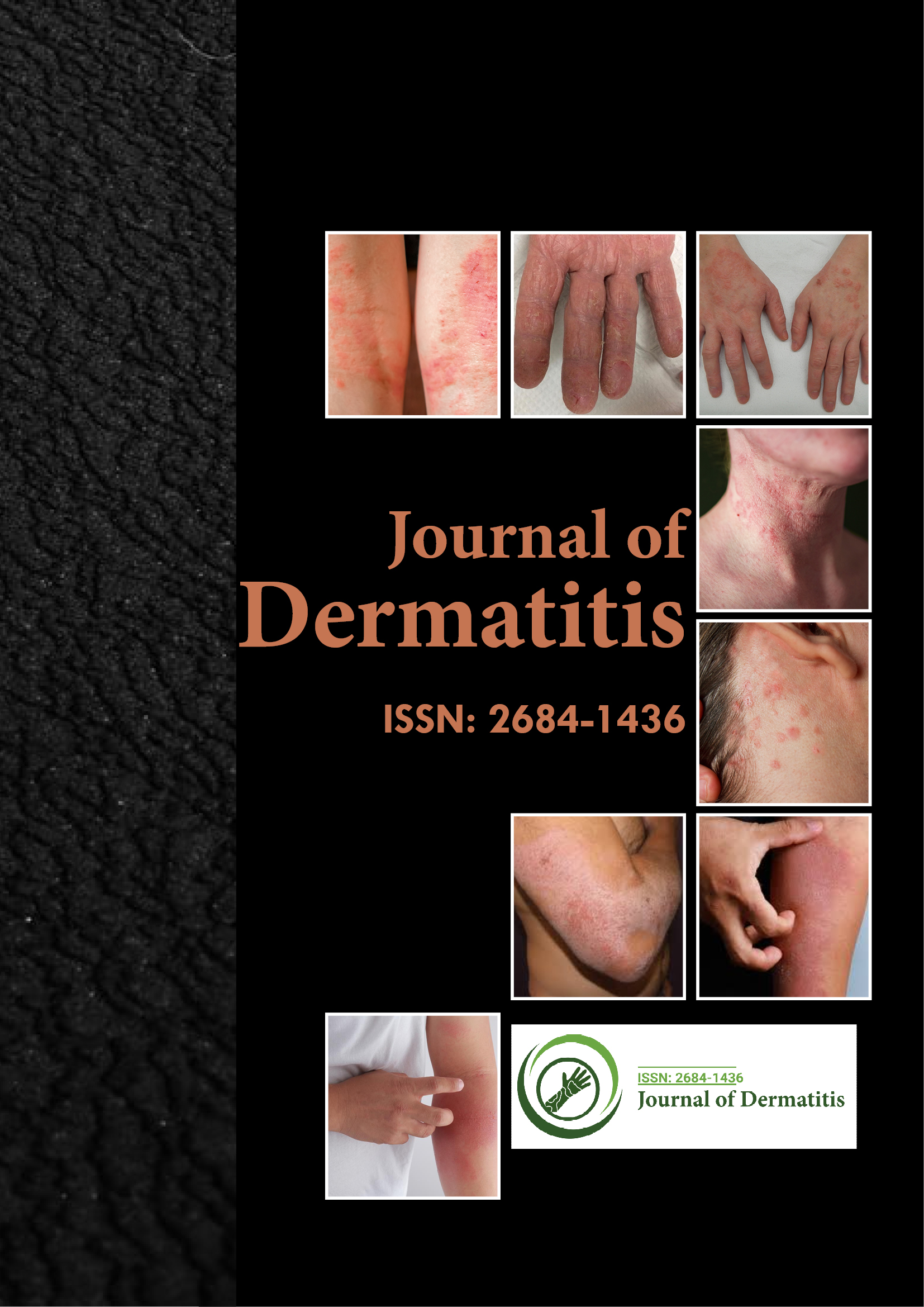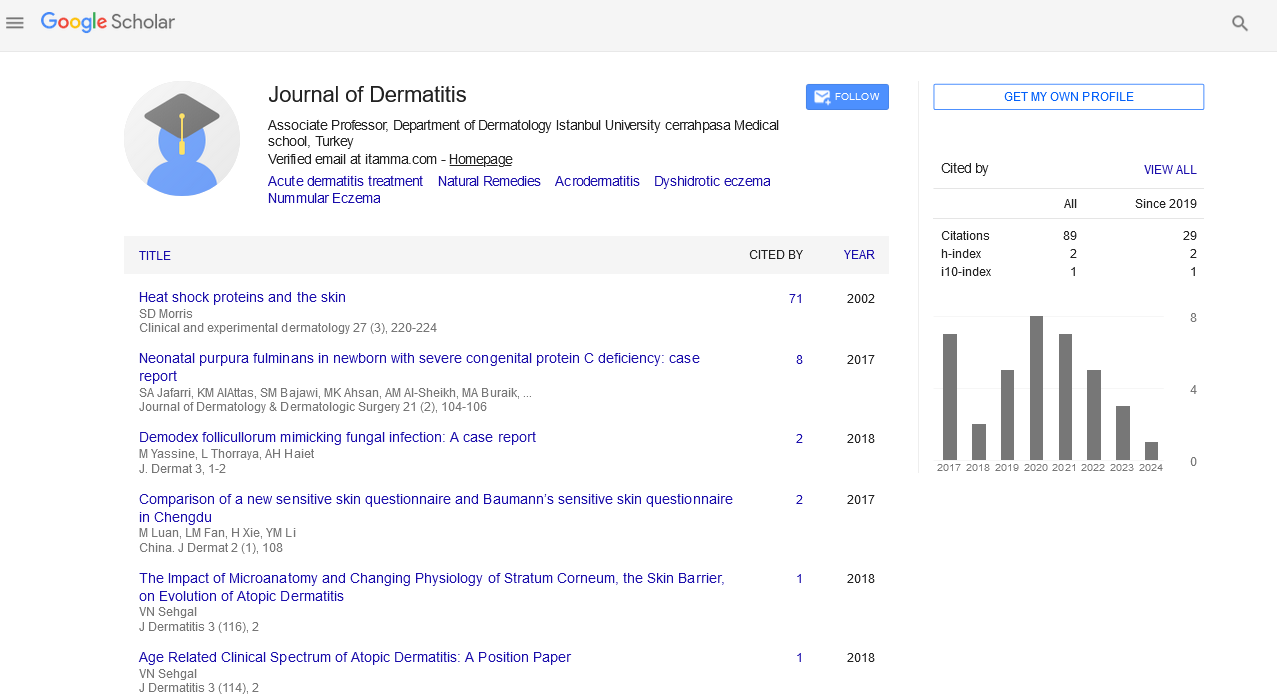Indexed In
- RefSeek
- Hamdard University
- EBSCO A-Z
- Euro Pub
- Google Scholar
Useful Links
Share This Page
Journal Flyer

Open Access Journals
- Agri and Aquaculture
- Biochemistry
- Bioinformatics & Systems Biology
- Business & Management
- Chemistry
- Clinical Sciences
- Engineering
- Food & Nutrition
- General Science
- Genetics & Molecular Biology
- Immunology & Microbiology
- Medical Sciences
- Neuroscience & Psychology
- Nursing & Health Care
- Pharmaceutical Sciences
Commentary - (2024) Volume 9, Issue 2
Addressing the Challenges of Multidrug-Resistant Gram-Negative Bacilli in Skin Infections
Sarah Johnson*Received: 29-May-2024, Manuscript No. JOD-24-27941; Editor assigned: 31-May-2024, Pre QC No. JOD-24-27941 (PQ); Reviewed: 14-Jun-2024, QC No. JOD-24-27941; Revised: 21-Jun-2024, Manuscript No. JOD-24-27941 (R); Published: 28-Jun-2024, DOI: 10.35248/2684-1436.24.9.238
Description
The increasing prevalence of Multidrug-Resistant (MDR) bacteria is a serious public health challenge, especially with regard to skin infections caused by gram-negative bacilli. Gram-negative organisms have emerged as significant contributors to skin and soft tissue infections i.e., Post-Traumatic Musculoskeletal Infections (PTMS), largely due to their intrinsic resistance mechanisms and the acquisition of novel resistance genes. This article explains about the historical background and fundamental contributors to the study of MDR gram-negative bacilli and reviews the complex challenges posed by these pathogens.
The discovery and classification of gram-negative bacteria has evolved over more than a century. Early research on bacterial infections focused on a small number of pathogens, while the importance of gram-negative bacilli was often underestimated. The mid-20th century saw the introduction of antibiotics, which dramatically reduced the mortality rate from bacterial infections. However, the overuse and misuse of these drugs rapidly facilitated the emergence of resistant strains, particularly those characterized by beta-lactamase production and efflux pump mechanisms.
The positive progress in identifying and overcoming the challenges posed by multidrug-resistant Gram-negative bacilli cannot be overlooked. Advances in genomic sequencing and bioinformatics have allowed researchers to identify the genetic basis of drug resistance, potentially create the path for targeted therapies. These technological advances have enabled the identification of resistance genes in clinical isolates, facilitating surveillance efforts and the design of new antimicrobial agents.
Despite these advances, significant challenges remain. The emergence of multidrug-resistant gram-negative bacilli causing skin infections has rendered many common antibiotics ineffective, complicating treatment regimens. In particular, organisms such as Pseudomonas aeruginosa and Acinetobacter baumannii are prevalent in healthcare settings and are known to be resistant to several antibiotics. Their ability to persist in the environment further complicates infection control efforts and increases the risk of hospital-acquired outbreaks.
Another challenge arises from the limited development of new antibiotics targeting these pathogens. The antibiotic pipeline is severely stagnant, with many pharmaceutical companies choosing to invest in more lucrative areas of research rather than antibiotic development. The loss of patent protection for many older antibiotics has also slowed investment in research into new alternatives, exacerbating the crisis. Without the introduction of new classes of antibiotics, healthcare providers will be forced to rely on last-resort therapies, which often carry a higher risk of side effects and toxicity.
Furthermore, the socioeconomic impacts of MDR gram-negative bacilli infections cannot be ignored. The management of skin and soft tissue infections caused by these organisms often results in increased health care costs due to prolonged hospital stays, the need for more expensive treatments and higher morbidity and mortality. These factors highlight the need for effective public health strategies, including antimicrobial stewardship programs that can help minimize the development of resistance.
To address these challenges, multidisciplinary approaches involving clinicians, researchers, public health professionals and policy makers are needed. Improving infection prevention strategies, strengthening surveillance systems and promoting responsible antibiotic use in humans and veterinary medicine are essential elements in the fight against the rise of multidrugresistant gram-negative bacilli. Additionally, research into alternative therapies, including phage therapy and antimicrobial peptides, shows potential in the future control of drug-resistant infections.
In conclusion, addressing the challenges posed by multidrug resistant Gram-negative bacilli in skin infections requires a multifactorial approach that includes historical knowledge, current research and innovative strategies. Although significant progress has been made in understanding and combating these pathogens, much remains to be done to ensure effective management, especially given the growing threat of antimicrobial resistance. Collaborative efforts across disciplines will be essential in the fight against multidrug-resistant infections.
Citation: Johnson S (2024). Addressing the Challenges of Multidrug-Resistant Gram-Negative Bacilli in Skin Infections. J Dermatitis. 9:238.
Copyright: © 2024 Johnson S. This is an open access article distributed under the terms of the Creative Commons Attribution License, which permits unrestricted use, distribution, and reproduction in any medium, provided the original author and source are credited.

